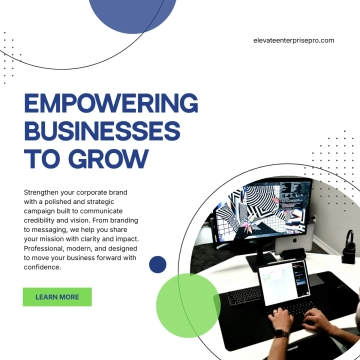Free Marketing Ad Spend Analysis Report

Introduction
A. Background
In the year [YYYY], [Your Company Name] has continued its commitment to a robust marketing strategy to promote and strengthen its products and services. With a rapidly evolving market, it is essential to scrutinize and understand the effectiveness of our marketing endeavors. This report aims to provide a comprehensive analysis of our marketing ad spend for the year [YYYY].
The marketing landscape in [YYYY] has witnessed significant changes, with the emergence of advanced technologies and shifting consumer preferences. Therefore, it's crucial to adapt our marketing strategies accordingly and assess the return on investment (ROI) of our ad spend.
B. Objectives
The primary objectives of this report are as follows:
Evaluate the Effectiveness: To critically assess the effectiveness of our marketing campaigns and their impact on brand awareness, customer engagement, and ultimately, revenue generation.
Identify Areas of Improvement: Identify areas where our marketing strategies can be improved or optimized to yield better results.
Data-Driven Decision-Making: To enable data-driven decision-making for future marketing strategies and budget allocation.
Ad Spend Overview
A. Total Ad Spend
In [YYYY], [Your Company Name] allocated a total budget of ${0} million for advertising efforts. This budget encompasses a variety of advertising channels, both online and offline. A detailed breakdown of this expenditure will be provided in the subsequent sections.
B. Channel Allocation
Our ad spend in [YYYY] was diversified across various marketing channels to ensure a wide reach and engagement with our target audience. The breakdown of ad spend allocation is as follows:
Each of these channels will be thoroughly analyzed to determine their individual contributions to our marketing success.
C. Seasonal Trends
Throughout the year, our ad spend exhibited seasonal variations, with a noticeable spike during the holiday season, primarily in the [first] quarter. Understanding the impact of these seasonal trends on our Return on Investment (ROI) is essential for making informed marketing decisions.
Marketing Ad Spend Analysis Report
A. ROI Analysis
One of the most critical aspects of our marketing ad spend is the return on investment (ROI). In [YYYY], our ROI stood at a commendable [00.00]%. This figure signifies the efficiency of our advertising campaigns in generating revenue and achieving our marketing objectives.
B. Conversion Rates
Understanding customer engagement is vital to the success of our marketing campaigns. In [YYYY], our online advertising campaigns achieved an average conversion rate of [00]%. This metric represents the percentage of website visitors who took a desired action, such as making a purchase or filling out a contact form.
We will further investigate the factors influencing these conversion rates, including the effectiveness of landing pages, ad content, and audience targeting. Additionally, we'll compare conversion rates across various advertising channels to identify strengths and weaknesses.
C. Click-Through Rates
Click-through rates (CTR) play a crucial role in the success of online advertising campaigns. In [YYYY], our online ads achieved an average CTR of [0.0]%. This metric reflects the percentage of users who clicked on our ads after viewing them.
Advertising Channels Analysis
A. Online Advertising
Google Ads
In [YYYY], [Your Company Name] allocated a budget of $[0] million for Google Ads. This channel proved to be one of the most lucrative, yielding a remarkable ROI of [0]%. To maximize the effectiveness of this channel, it's crucial to examine the top-performing keywords and campaigns. This section will provide insights into the specific keywords and ad campaigns that contributed to this success.
Social Media Ads
A substantial portion of our online ad spend, $[0.0] million, was directed toward social media advertising. The ROI for this channel was [0.0] %. To optimize our social media advertising, we need to conduct a platform-specific analysis. This will include assessing the performance of ads on different social media platforms and understanding which platforms resonated most with our target audience.
B. Print Advertising
In [YYYY], we allocated $[0.0] million to print advertising. While this channel is traditionally considered, it remains relevant. We will analyze the regional distribution of our print ads, examining the regions where this channel was most effective. Furthermore, we will assess the performance metrics of print ads to identify opportunities for improvement.
C. Television Advertising
Television advertising received a budget of $[000,000] in [YYYY]. To make informed decisions about this channel's future, we will analyze the time slots during which our ads aired and the demographics of the viewers. This data will provide insights into the efficiency of our television advertising campaigns.
Geographic Analysis
A. Regional Ad Spend
To gain a comprehensive understanding of our marketing ad spend in [YYYY], it is essential to analyze its regional distribution. The table below provides a breakdown of ad spend by region, highlighting which regions received the most significant allocation:
B. Market Penetration
Market penetration is a crucial metric to determine how effectively we've established our brand in different regions. The table below provides an overview of market penetration in selected regions:
Marketing Ad Spend Analysis Report
A. Reallocation of Budget
Based on the comprehensive analysis of our marketing ad spend in [YYYY], we recommend the following budget reallocation strategies:
Online Advertising:
Increase the budget allocation for Google Ads, given its high ROI and strong performance.
Consider diversifying online advertising to reach a broader audience by exploring emerging advertising platforms.
Print Advertising:
Optimize the regional distribution of print ads to focus on areas with higher market potential.
Explore digital integration with print campaigns for a more seamless customer experience.
Television Advertising:
Assess the effectiveness of time slots and demographics; reallocate the budget to optimize ad placement.
B. Strategy Adjustments
Our marketing strategies for [YYYY] have shown promise, but we recommend specific adjustments to further enhance performance:
Invest in data-driven decision-making: Continuously monitor and analyze data to adapt strategies in real-time.
Leverage customer insights: Use customer feedback and market research to fine-tune ad content and targeting.
Embrace emerging technologies: Explore opportunities in augmented reality (AR), virtual reality (VR), and artificial intelligence (AI) for innovative advertising campaigns.
Enhance content personalization: Tailor ad content to individual customer preferences and needs.
C. Monitoring and Evaluation
To ensure the success of our marketing strategy in [YYYY], we will implement a robust monitoring and evaluation system. Key performance indicators (KPIs) will be closely tracked, and quarterly reviews will be conducted to make necessary adjustments.
Marketing Strategy for [YYYY]
A. Setting the Stage
As we transition from the analysis of our [YYYY] marketing ad spend, it's essential to outline the marketing strategy for the year [YYYY]. Building on the insights and recommendations presented in this report, we aim to lay the foundation for a successful marketing year ahead.
B. Strategic Objectives
The strategic objectives for our marketing efforts in [YYYY] are as follows:
Enhanced ROI: We will continue to focus on optimizing our return on investment by allocating resources to the most effective advertising channels and campaigns.
Customer-Centric Approach: Our strategy will revolve around understanding and meeting customer needs, aligning content and advertising efforts accordingly.
Digital Transformation: Embrace technological advancements, including AI and data analytics, to enhance the precision and personalization of our advertising.
International Expansion: Capitalize on market penetration opportunities identified in the analysis, exploring growth in Asia-Pacific and Latin America.
Competitive Edge: Maintain a strong presence in the market by staying competitive in ad spend and expanding our share of voice.
C. Action Plan
Our action plan for [YYYY] involves the following steps:
Budget Allocation: Implement the recommended budget reallocation for online, print, and television advertising.
Content Optimization: Create content that is data-driven and tailored to our target audience. Embrace emerging technologies for innovative content delivery.
Customer Feedback Loop: Establish a continuous feedback loop to monitor customer preferences and adjust marketing strategies accordingly.
Market Expansion: Begin market expansion efforts in Asia-Pacific and Latin America, focusing on regions with the highest potential.
Competitive Monitoring: Continuously monitor competitor ad spend and adjust our strategies to maintain competitiveness.
Conclusion
In conclusion, the Marketing Ad Spend Analysis for [Your Company Name] in [YYYY] provides valuable insights into the performance of our marketing efforts. The data-driven analysis has revealed several key takeaways:
A commendable ROI of [0.0]%, indicating the overall profitability of our advertising campaigns.
Significant variations in conversion rates across channels, necessitating targeted improvements.
High CTR in online advertising, indicating strong engagement with our target audience.
Our geographic analysis highlighted the importance of [North America] as a key market, while the market penetration data emphasized growth opportunities in [Asia-Pacific] and [North America]. Competitor analysis showed that we are competitive regarding ad spend and share of voice.
The recommendations provided in this report aim to enhance our marketing strategies and optimize budget allocation. By embracing data-driven decisions and staying agile in our approach, we can continue to lead in the dynamic marketing landscape of [YYYY].
This report serves as a foundation for future marketing endeavors, ensuring that [Your Company Name] remains at the forefront of the industry. If you require any further details, charts, or additional analysis, please feel free to reach out to [Your Name] at [Your Company Email] for more information.
- 100% Customizable, free editor
- Access 1 Million+ Templates, photo’s & graphics
- Download or share as a template
- Click and replace photos, graphics, text, backgrounds
- Resize, crop, AI write & more
- Access advanced editor
Elevate your marketing strategy with Template.net's Marketing Ad Spend Analysis Report Template. Unlock the power of data-driven decisions with this editable and customizable resource. Crafted to perfection, it's easily tailored to your unique needs using our AI Editor Tool. Maximize ROI and optimize campaigns effortlessly. Harness the potential of your ad spend today.





























